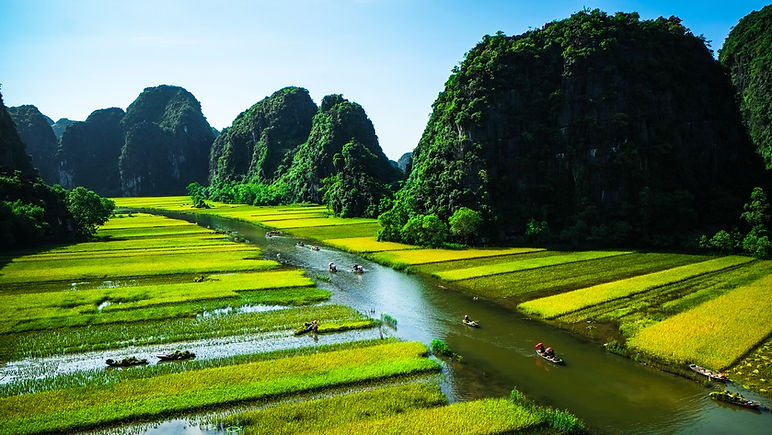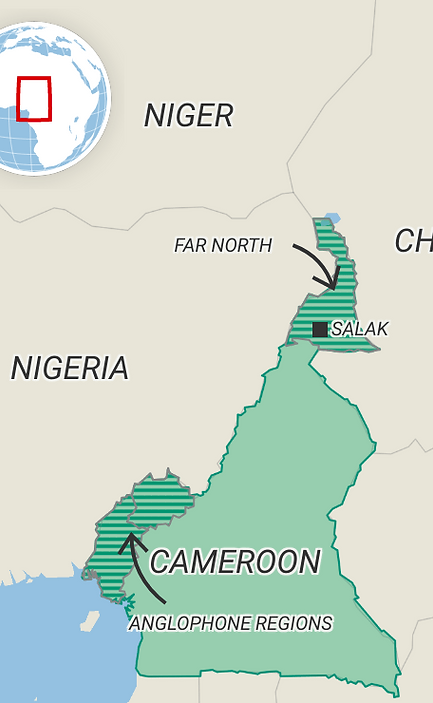

Basins and Water Resources
Groundwater Recharge in the Far North Region of Cameroon


Key details
Location:
Far North Region
Duration:
Start June 2023 End July 2033
Budget:
$ 40,000
Project leader:
Mr Abongwa Chia Peter
Project Code:
CAM/2023/164

The Far North Region of Cameroon is characterized by a semi-arid climate, with hot and dry conditions for much of the year. The region faces significant challenges in terms of water availability, particularly during the dry season, due to low and erratic rainfall patterns. Groundwater resources, therefore, play a crucial role in meeting the water needs of both human populations and agriculture in the region.
Importance of Groundwater in the Far North Region
-
Groundwater is an essential source of water for drinking, agriculture, and livestock in the Far North Region, especially during the long dry season (which lasts for about 7-8 months).
-
Surface water sources (rivers, lakes, and reservoirs) are scarce in the region, and most of these water bodies dry up or become unreliable during the dry season, making groundwater even more critical.
-
Agriculture, primarily rain-fed farming, is a major economic activity in the Far North, and the reliance on groundwater for irrigation is growing, especially as surface water resources become insufficient.
Groundwater Challenges
-
Groundwater in the Far North Region is being over-extracted in some areas, especially for irrigation purposes, which can lead to declining water levels and land subsidence. Over-extraction of shallow aquifers is particularly concerning.
-
The Far North is highly vulnerable to climate change, which may lead to even more erratic rainfall and higher evaporation rates. This can further stress groundwater resources and make it difficult to recharge aquifers at a rate that supports local demand.
-
In many rural areas, there is insufficient infrastructure to access groundwater efficiently. Boreholes and wells may not be well-maintained or may be too few in number to meet the growing demand, leading to water scarcity in some parts of the region.
-
Poor water quality due to contamination from agricultural activities, poor sanitation practices, and salinity makes access to clean and safe groundwater a significant challenge.
Project Overview:
The goal of this project is to improve groundwater recharge in the Far North Region of Cameroon through the implementation of artificial recharge systems and enhanced water conservation practices. This will ensure a sustainable, reliable water supply for rural communities and support agricultural activities, especially in areas affected by prolonged dry seasons.
Key Objectives:
-
Create infrastructure that helps to replenish groundwater aquifers, especially in areas with high water demand and where natural recharge is insufficient.
-
Implement water-saving technologies and techniques that reduce the strain on groundwater resources and enhance overall water use efficiency.
-
Improve water availability and reduce over-extraction of groundwater by enhancing recharge, maintaining adequate water levels, and ensuring long-term sustainability.
-
Provide a more stable water supply to rural communities for agricultural purposes, particularly during the dry season, to increase food security and reduce the impacts of drought.
-
Raise awareness among local communities about the importance of groundwater recharge and water conservation, promoting active participation in sustainable practices.
Key Strategies for Groundwater Recharge
Artificial Recharge Systems
-
Construct recharge wells that will facilitate the infiltration of water into deeper aquifers. These wells will direct surface water (rainwater or treated surface water) into underground aquifers, improving groundwater levels in critical areas.
-
Build percolation pits or trenches in areas with permeable soil to allow rainwater to percolate into the ground and recharge the aquifer. This method is particularly effective in areas where natural recharge is slow.
-
Construct small dams or ponds that capture seasonal rainfall, allowing water to seep into the ground and recharge groundwater. These structures can also reduce surface runoff, preventing soil erosion and improving water retention in the soil.
-
In regions with sandy soils, sand dams can be constructed across seasonal rivers or streams. The sand traps water, and over time, this water infiltrates into the aquifer, providing a steady groundwater supply.
-
Develop artificial infiltration basins that can store rainwater and facilitate its absorption into the ground. These basins can be strategically located in areas with low groundwater recharge potential.
Improved Water Conservation Practices
-
Encourage the construction of rainwater harvesting systems for both domestic and agricultural use. Collecting and storing rainwater can reduce dependency on groundwater for everyday needs and improve water security in rural areas.
-
Promote the use of water-efficient irrigation techniques, such as drip irrigation, that minimize water waste and reduce the pressure on groundwater resources. This is especially important for the region's agricultural sector, which heavily relies on water for crop cultivation.
-
Build or enhance water storage tanks to store water during the rainy season. These tanks can be used to supply water during dry periods, reducing the need to over-extract groundwater for irrigation and other uses.
-
Promote soil conservation techniques such as mulching, terracing, and contour farming to reduce surface runoff and increase water retention in the soil. This can improve groundwater recharge by allowing more water to infiltrate the ground rather than running off into nearby rivers or streams.
-
Encourage farmers to adopt drought-resistant crops and water-saving practices that require less irrigation, thereby conserving groundwater resources.
Monitoring and Data Collection
-
Set up a monitoring system to regularly track groundwater levels in key areas of the Far North Region. This will help assess the success of recharge efforts and guide future water management decisions.
-
Monitor the quality of both surface and groundwater to ensure that recharge projects are not contributing to contamination. This includes testing for salinity, arsenic levels, and other potential contaminants.
-
Collect data on rainfall patterns, runoff, and water availability to better understand how natural recharge occurs and to refine artificial recharge systems.
Expected Outcomes
-
By implementing artificial recharge systems, groundwater levels will increase, helping to maintain a consistent water supply during both dry and wet seasons. This will ensure that rural communities and farmers have access to water even during extended dry periods.
-
The project will create a more sustainable water supply for agricultural use, reducing over-reliance on groundwater and enabling farming communities to cultivate crops throughout the year, even during droughts.
-
With a more stable and reliable water supply, agricultural productivity will increase. Farmers will be able to irrigate crops more efficiently, leading to higher yields and improved food security.
-
Through the adoption of efficient irrigation systems and rainwater harvesting, the project will reduce water wastage, improving overall water use efficiency and contributing to the long-term sustainability of groundwater resources.
-
The project will empower communities by involving them in groundwater recharge activities and educating them on sustainable water practices. Local ownership of water management systems will increase the likelihood of long-term success.
-
The region will be better equipped to deal with the impacts of climate change, including more frequent and intense droughts, through enhanced groundwater recharge and water conservation techniques.
Implementation Plan
-
Phase 1: Assessment and Design (Year 1)
-
Conduct detailed hydrological studies to identify the most suitable locations for recharge systems.
-
Assess community water needs and engage stakeholders in the design of the artificial recharge systems and water conservation measures.
-
Identify and train local partners, such as NGOs or government agencies, to support implementation.
-
-
Phase 2: Infrastructure Development and Pilot Projects (Year 2-3)
-
Begin construction of recharge wells, percolation pits, check dams, and other infrastructure in priority areas.
-
Implement pilot rainwater harvesting and irrigation projects to test their effectiveness.
-
Begin building water storage tanks for agricultural and domestic use.
-
-
Phase 3: Monitoring and Evaluation (Year 4)
-
Set up a comprehensive groundwater monitoring and data collection system.
-
Regularly assess the performance of the recharge systems and water conservation practices, making adjustments as needed.
-
Conduct community workshops and training to reinforce water-saving practices.
-
-
Phase 4: Scaling and Sustainability (Year 5+)
-
Expand successful recharge systems and water conservation practices to other areas in the region.
-
Encourage local governments and communities to take ownership of the projects and continue their maintenance.
-
Seek partnerships with international donors and local institutions to ensure the long-term sustainability of the project.
-